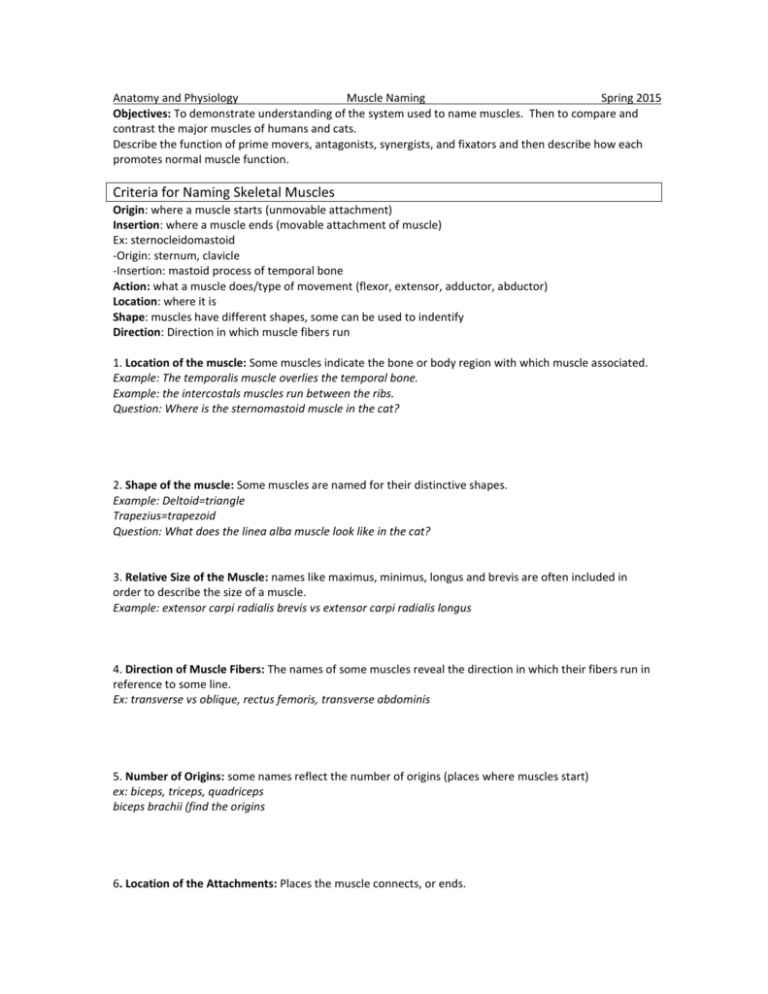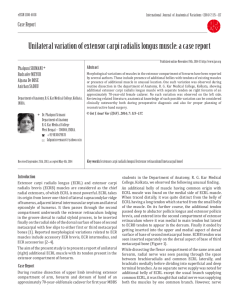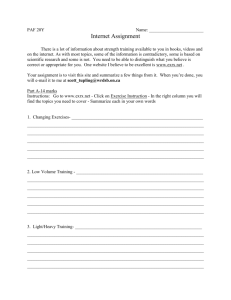Muscle Naming & Function: Anatomy Worksheet
advertisement

Anatomy and Physiology Muscle Naming Spring 2015 Objectives: To demonstrate understanding of the system used to name muscles. Then to compare and contrast the major muscles of humans and cats. Describe the function of prime movers, antagonists, synergists, and fixators and then describe how each promotes normal muscle function. Criteria for Naming Skeletal Muscles Origin: where a muscle starts (unmovable attachment) Insertion: where a muscle ends (movable attachment of muscle) Ex: sternocleidomastoid -Origin: sternum, clavicle -Insertion: mastoid process of temporal bone Action: what a muscle does/type of movement (flexor, extensor, adductor, abductor) Location: where it is Shape: muscles have different shapes, some can be used to indentify Direction: Direction in which muscle fibers run 1. Location of the muscle: Some muscles indicate the bone or body region with which muscle associated. Example: The temporalis muscle overlies the temporal bone. Example: the intercostals muscles run between the ribs. Question: Where is the sternomastoid muscle in the cat? 2. Shape of the muscle: Some muscles are named for their distinctive shapes. Example: Deltoid=triangle Trapezius=trapezoid Question: What does the linea alba muscle look like in the cat? 3. Relative Size of the Muscle: names like maximus, minimus, longus and brevis are often included in order to describe the size of a muscle. Example: extensor carpi radialis brevis vs extensor carpi radialis longus 4. Direction of Muscle Fibers: The names of some muscles reveal the direction in which their fibers run in reference to some line. Ex: transverse vs oblique, rectus femoris, transverse abdominis 5. Number of Origins: some names reflect the number of origins (places where muscles start) ex: biceps, triceps, quadriceps biceps brachii (find the origins 6. Location of the Attachments: Places the muscle connects, or ends. Ex. Sternocleidomastoid 7. Action: Muscles can be named for their action, or what they do. Ex. Flexor, extensor, adductus Example: Extensor carpi radialus longus Action: What joint it acts on: Where it is: Now find an example for each muscle naming criteria on the cat. Then on a human 1. 2. 3. 4. 5. 6. 7. Muscle movement 1. prime mover: muscle that bears the major responsibility of for effecting a particular movement ex: biceps brachii prime mover of elbow flexion 2. antagonist: opposes that movement ex: triceps brachii 3. synergist: assists in that movement ex: 4. Fixator: type of synergist that stabilizes a bone/keeps it from moving Ex: 5. flexor: flexes or closes a joint ex: 6. extensor: opens or increases the angle of a joint ex: 7. adductor: brings close to body ex: 8. abductor: moves away from body 9. ex: 10. elevator: raises a structure or produces a movement superiorly ex: 11. depressor: lowers a structure or provides a movement in an inferior/downward direction ex:







